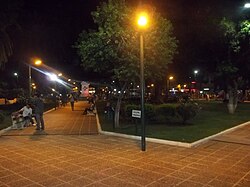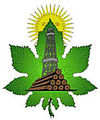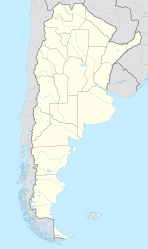Tartagal, Salta
| Tartagal | ||
|---|---|---|
| City | ||
 |
||
|
||
| Location of Tartagal in Argentina | ||
| Coordinates: 22°30′S 63°50′W / 22.500°S 63.833°WCoordinates: 22°30′S 63°50′W / 22.500°S 63.833°W | ||
| Country | Argentina | |
| Province | Salta | |
| Department | San Martín | |
| Founded | 1924 | |
| Government | ||
| • Mayor | Sergio Napoleón Leavy (Partido Frente para la Victoria) | |
| Area | ||
| • Total | 3,015 km2 (1,164 sq mi) | |
| Elevation | 490 m (1,610 ft) | |
| Population (2012) | ||
| • Total | 69,696 | |
| • Density | 23/km2 (60/sq mi) | |
| Time zone | ART (UTC-3) | |
| CPA base | A4560 | |
| Dialing code | +54 3875 | |
| Climate | Cwa | |
| Website | Tartagal website | |
Tartagal (Spanish pronunciation: [tartaˈɣal]) is a city in the north of the province of Salta, Argentina, 365 km from the provincial capital. It has over 60,000 inhabitants as per the 2001 census [INDEC], and it is the head town of the General José de San Martín Department (with about 3/4 of its population). It is crossed by the river of the same name.
Tartagal is located in an area of major economic importance for the province, within Argentina's second largest natural gas reservoir, and at a crossroads for trade in the Mercosur (being only 55 km from the border with Bolivia and 100 km from Paraguay). The area produces 25% of the oil and about 16% of the natural gas in Argentina.
The social composition of Tartagal is characterized by its cultural diversity. There are seven aboriginal ethnic groups that reside in Tartagal: wichís (or weenhayek), , chanés, quechuas, , and Aymaras. Another important element of its social structure is the migratory component that is added to its population. Because of it is so close to Bolivia, a high percentage of its inhabitants are of Bolivian origin. Tartagal was the main destination of immigration of the peasant-livestock population of the east (commonly known as "Chaco") that settled, like the Aboriginals, in neighborhoods surrounding the city. It also has important foreign communities including: Syrian-Lebanese, Paraguayan, and Spanish. Tartagal has a diverse population and many cultural nuances
The last census, in the year 2010, the city of Tartagal had a population of 64,530 inhabitants, becoming the third most populated city of its province, surpassed only by the provincial capital and by San Ramón de la Nueva Orán.
...
Wikipedia


